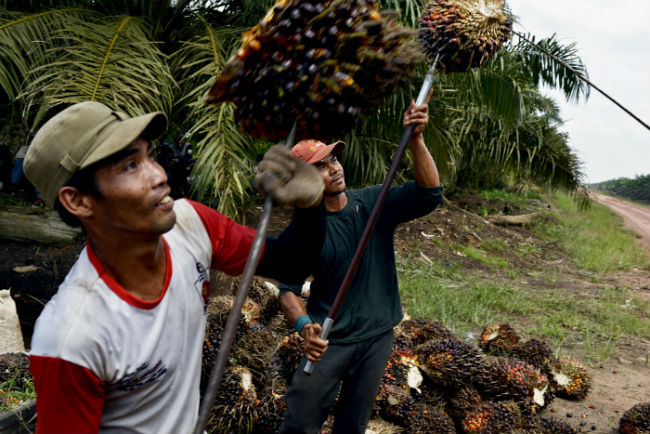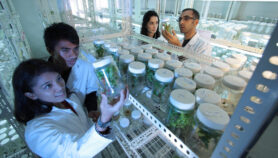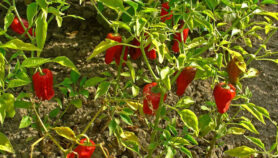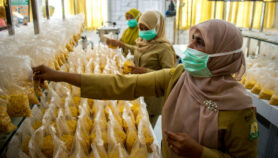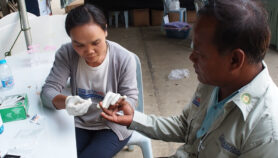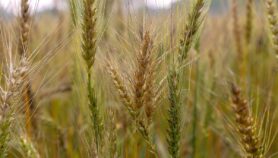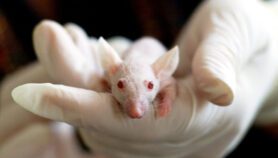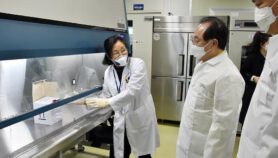By: Brendon Lee
Send to a friend
The details you provide on this page will not be used to send unsolicited email, and will not be sold to a 3rd party. See privacy policy.
Scientists in Malaysia are perfecting a method to produce high-protein animal feed from palm waste and fungi, offering a potential outlet for by-products of controversial palm oil production, a paper says.
Farmers often use agro-industrial waste — such as rice bran — as animal feed, but these crop residues lack protein, vitamins and other nutrients, the study says. The scientists from the University of Malaysia Perlis (UniMAP) used the fungus Aspergillus terreus to produce large amounts of protein through the fermentation of palm pressed fibre and palm oil decanter cakes, two types of palm oil milling residue.
“We opted to focus our research on palm oil agro-industrial waste due to its abundance from this industry.”
Zarina Zakaria, UniMAP
This approach is cheaper than adding micro-ingredients to the initial low-cost feed, the team says. It would also make use of waste from the flourishing palm oil industry.
According to a 2007 report by the United Nations Environment Programme, 30,000 square kilometres of forest will be lost every year in Indonesia by 2020 to make room for growing oil palm plantations.
“We opted to focus our research on palm oil agro-industrial waste due to its abundance from this industry,” says co-author Zarina Zakaria, a biotechnology researcher at UniMAP.
Fermenting the palm oil by-products with the fungus for seven days at 32 degrees Celsius increased their protein content from 159 to 401 milligrams per litre for palm-pressed fibre, and from 146 to 493 milligrams per litre for palm oil decanter cake.
“Our research is still in its early stages, but with further testing it is possible to replicate the process using different types of agro-industrial waste with other strains of microorganisms,” Zakaria adds.
Previous efforts have explored the potential of fermenting materials such as coconut dregs, orange waste, rice bran or banana peel, says the paper, published in the Pertanika Journal of Tropical Agricultural Science in February.
In recent years, the UN Food and Agriculture Organization (FAO) has stressed the importance of using agro-industrial by-products as livestock feed, for instance by making “densified feed blocks” from straw, says Harinder Makkar, a feed expert at the FAO.
However, there are hurdles ahead to turn the fungus fermentation method into a profitable way to produce animal feed on a large scale, says Makkar.
“The production of single cell protein through fermentation of agro-industrial by-products requires technical expertise and proper infrastructure,” Makkar says. While the industry could implement it, this technique will most likely not be accessible directly for small farmers, he adds.
References
Abdul Rahman and others Bioproteins production from palm oil agro-industrial wastes by Aspergillus Terreus UniMAP AA-1 (Tropical Agricultural Science, 2016)


